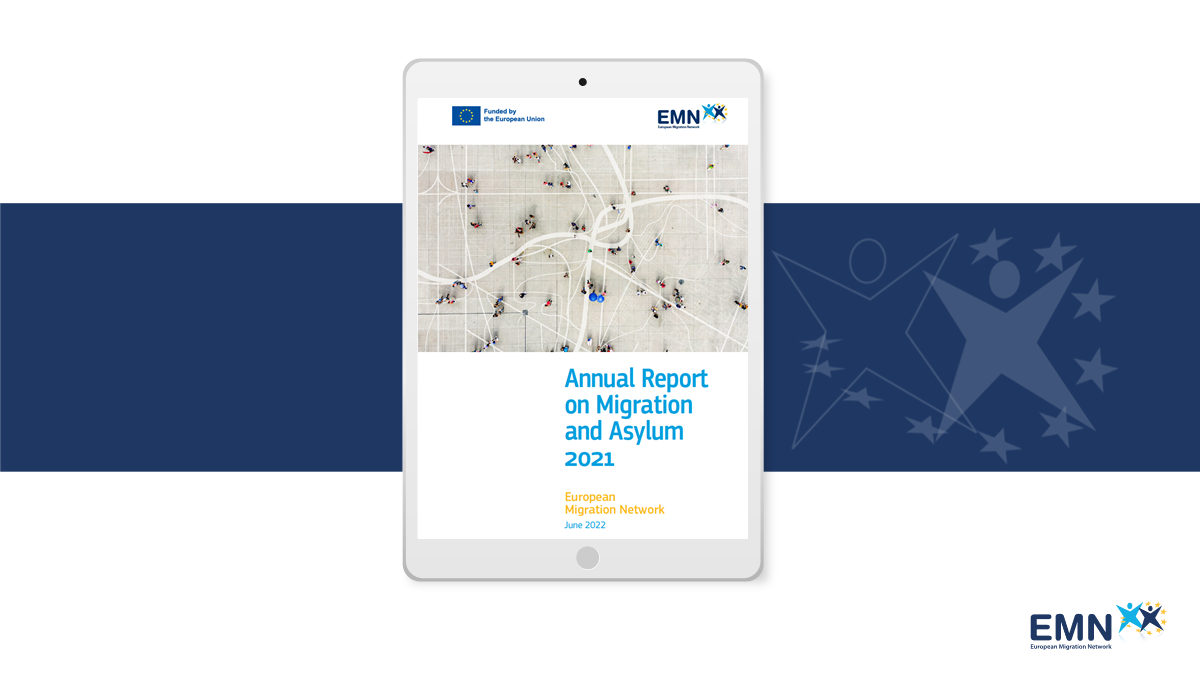EMN Annual Report explores trends on migration and asylum in 2021
15.06.2022 The European Migration Network (EMN) has released its Annual Report on Migration and Asylum, providing an overview of the key developments in the EU Member States, Norway and Georgia in 2021. While the COVID-19 crisis continued to have an impact on migration and asylum in 2021, political unrest exerted pressure on the asylum and reception systems. These challenges came in addition to persisting ones such as the need to update migration management systems and ensure the protection of refugees.
The European Migration Network (EMN) has released its Annual Report on Migration and Asylum, providing an overview of the key developments in the EU Member States, Norway and Georgia in 2021. While the COVID-19 crisis continued to have an impact on migration and asylum in 2021, political unrest exerted pressure on the asylum and reception systems. These challenges came in addition to persisting ones such as the need to update migration management systems and ensure the protection of refugees.
Several developments occurred in the areas of migration and asylum in 2021. EU Member States continued to experience the effects of COVID-19 and to tackle challenges of the health crisis on integration, labour market needs and living conditions of migrants. Member States typically extended the right to stay to certain third-country nationals and introduced travel restriction measures. In asylum, measures were taken to prevent the spread of COVID-19 in reception centres.
During 2021, the Belarus border crisis and the fall of Afghanistan’s Government resulted in sudden increases in migrants coming to the EU, including those seeking protection. In June 2021, following a geopolitical turmoil, Belarus started to facilitate the transit of migrants towards Estonia, Latvia, Lithuania and Poland. This led to emergency measures in these EU countries including strengthened border surveillance while temporary measures were put forward at EU level to manage this emergency situation in a humane, orderly and dignified manner. Another significant development was the fall of Afghan government: as the Taliban returned to power in August 2021, most Member States engaged in evacuating and offering protection to Afghans.
Increasing the efficiency and effectiveness for better migration management was a common theme at EU and national level. The European Commission continued to develop a comprehensive approach in the areas of migration, asylum, integration and border management through progress on the Pact on Migration and Asylum. Member States undertook a wide range of legislative and organisational changes to increase the effectiveness and efficiency of migration policies and management. An increasing focus was placed on innovation, simplification of processes and digitalisation of migration management, such as digital visa and residence permit applications. In border management, several countries implemented large-scale EU information technology systems.
Member States also established various measures to increase their attractiveness to third-country workers, with a particular focus on attracting highly skilled and qualified workers but also other workers in specific areas facing labour shortages. At the same time, the protection of asylum seekers and refugees remained a priority at EU and national level during 2021.
New forms of cooperation with third countries were established both at EU and national level, not only to prevent irregular migration, but also in the area of skilled migration. The EMN itself opened its doors to Georgia and Moldova, who joined network as observer countries in March 2021.
Read the new EMN Annual Report HERE.